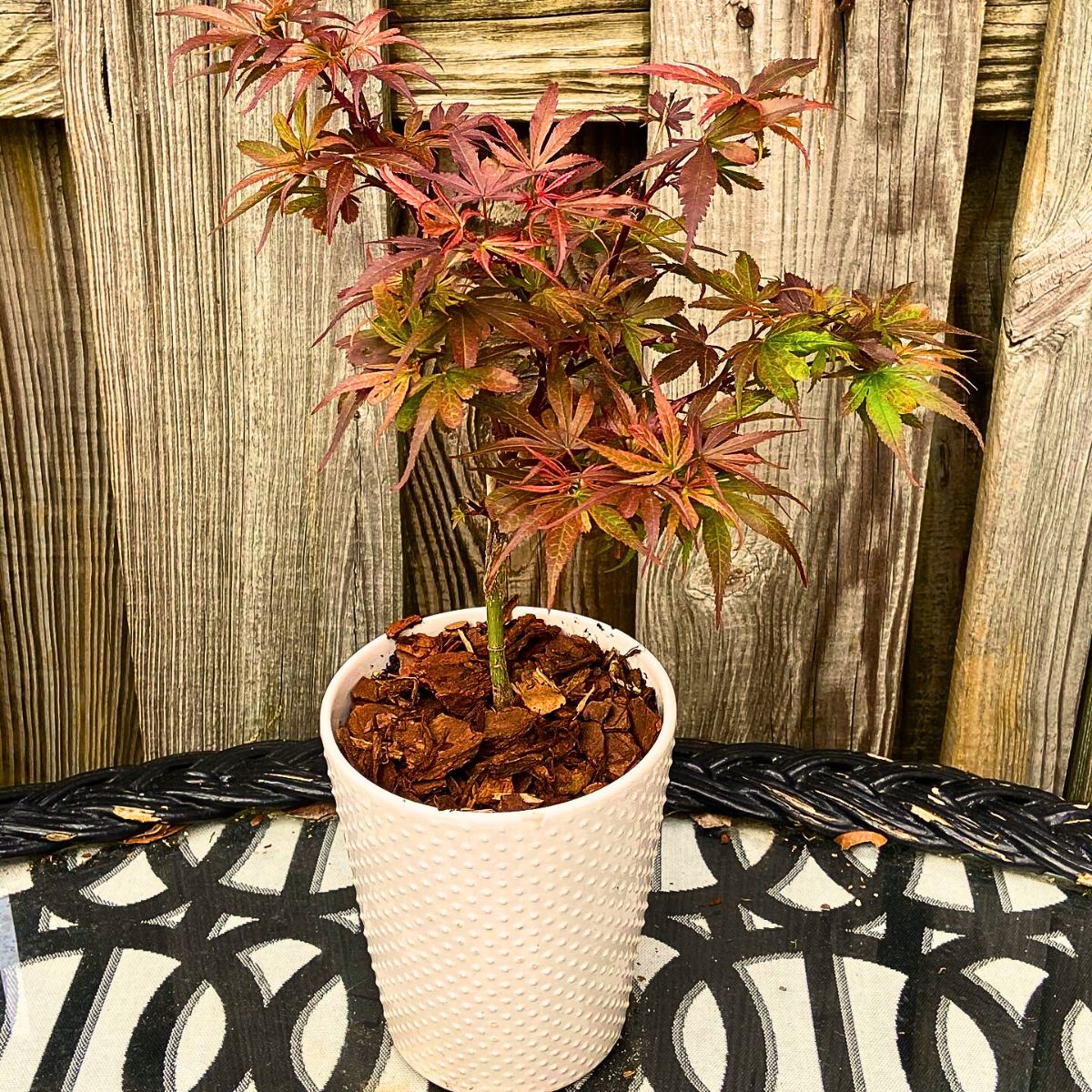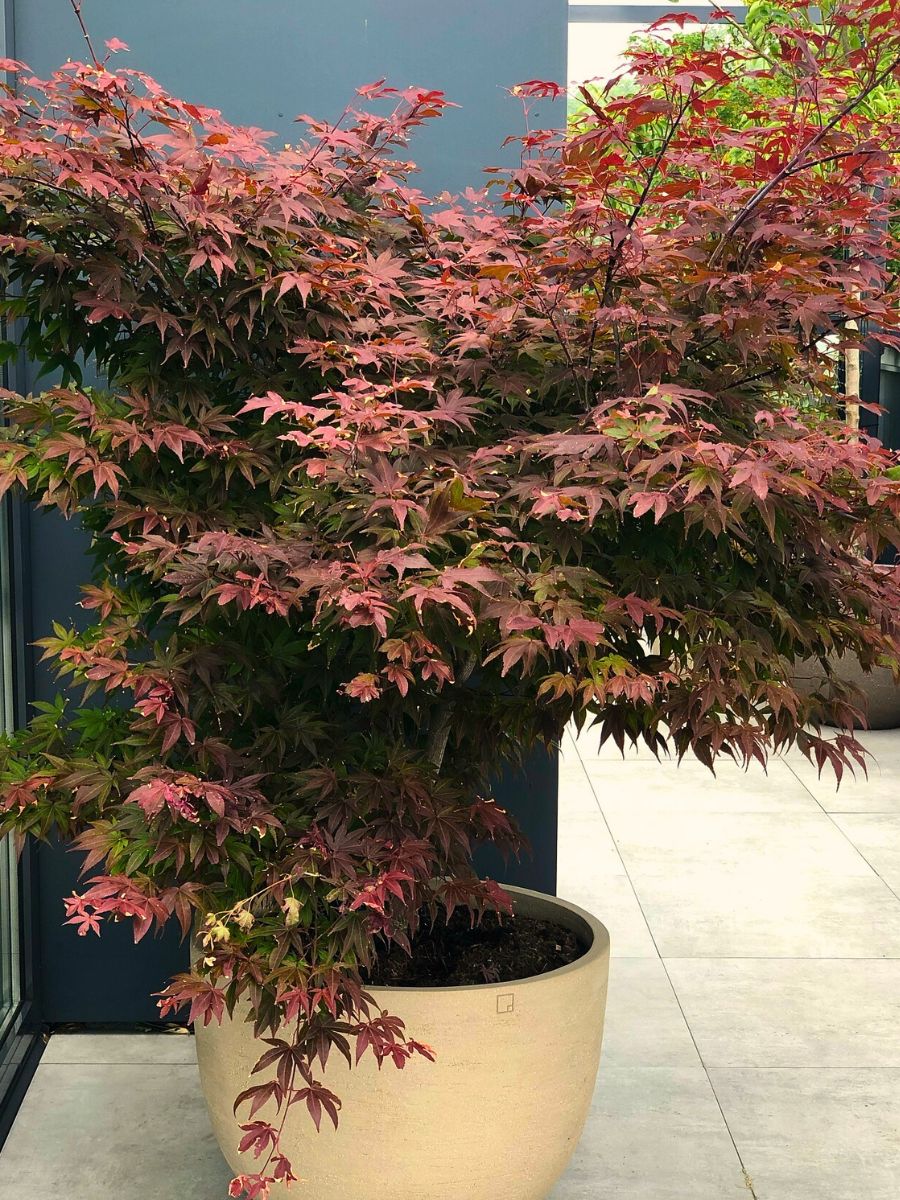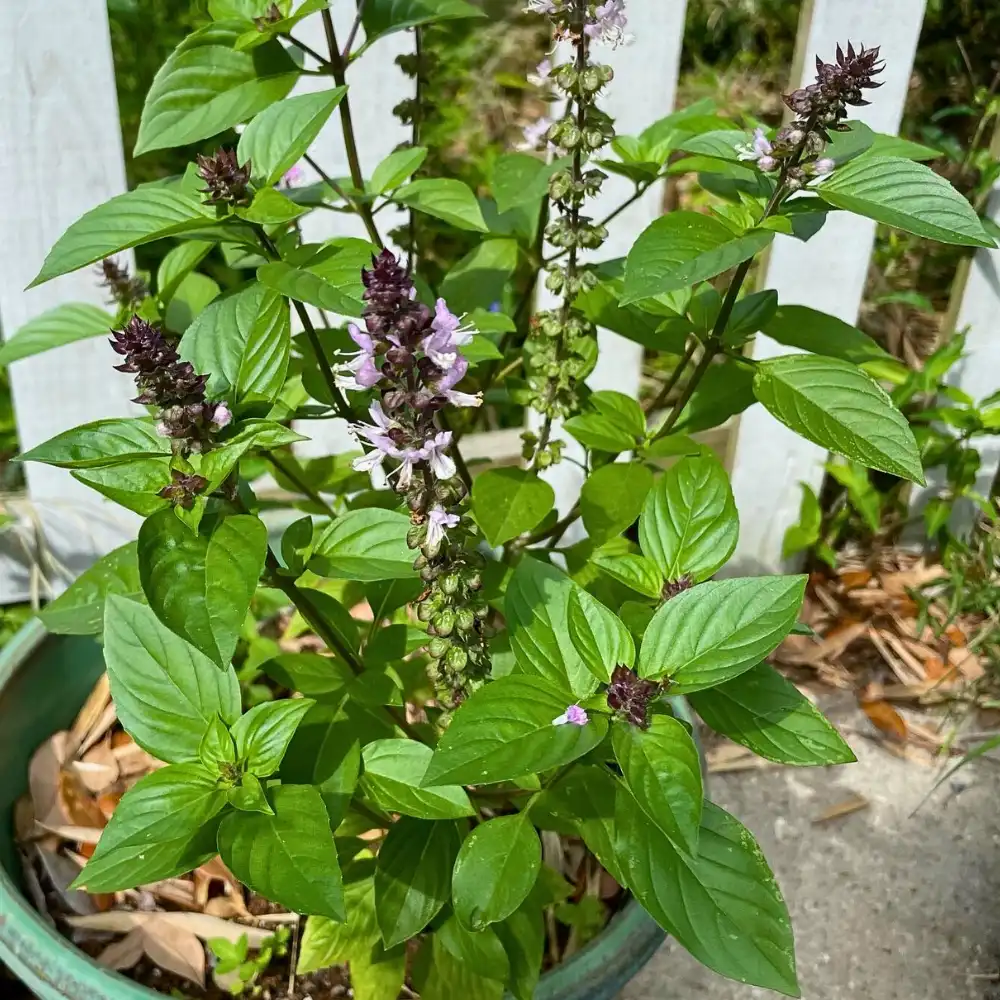The dwarf Japanese maple, also called Acer palmatum is a beloved ornamental tree known for its spectacular foliage, graceful form, and versatility in landscaping. These trees are particularly appealing for gardeners with limited spaces in their homes as they offer the beauty of the Traditional Japanese maple tree but in a compact size.
The miniature trees are an increasingly popular choice for individuals looking to add some grace and year-round interest to their outdoor spaces due to their striking foliage, and small sizes. It wouldn't matter whether one has a small city garden, a large sprawling landscape, or just a patio or balcony since there is always Japanese maple variety for that space.
What is a Dwarf Japanese Maple?
Basically, these are small, slow-growing trees and shrubs in the maple family (Aceraceae). Unlike their full-sized counterparts which can reach 30 feet or more, dwarf Japanese maples typically max out between three and six feet tall. This miniature stature makes them ideal for use in small gardens, containers, and other confined spaces.

Photo by @birchgrovegardens
But despite their compact size, dwarf Japanese maples pack a big punch in terms of visual interest. One of the defining characteristics of these trees is their incredible foliage. The leaves come in a vast array of shapes, sizes, and colors, including deep reds, vibrant oranges, brilliant yellows, soft greens, and delicate pinks. Many varieties also exhibit stunning fall color transformations, making them a real four-season delight.
In addition to their impressive leaf disply, dwarf Japanese maples are valued for their graceful, elegant branching habits. Some varieties have a mounding, shrub-like appearance, while others feature a more upright, vase-shaped growth pattern. There are even weeping varieties with cascading branches that create quite a striking focal point. This diverse range of growth habits allows gardeners to select the perfect dwarf Japanese maple tree to suit their specific design needs.

Characteristics of Dwarf Japanese Maples
One of the most significant features of the dwarf Japanese maple trees is its size. Generally, these trees reach a height of between three to ten feet at maturity, depending on the specific cultivar. For example, Acer palmatum 'Shaina' typically grows to about 3-5 feet tall and 3-4 feet wide. Acer palmatum 'Kurenai Jishi', known as the red lion's head maple, also reaches heights of around 3-5 feet but has a unique curled leaf structure that adds to its charm.
In contrast, some varieties like Acer palmatum 'Tamukeyama' can grow slightly taller, reaching up to eight feet in height after several years of growth. This variability in size allows gardeners to choose a Japanese dwarf maple tree that best fits their landscape or container garden.

Photo by @mikawayatsubusa
Moreover, the leaves of dwarf Japanese maples are typically deeply lobed and can exhibit a range of colors throughout the seasons. In spring, many varieties showcase vibrant reds or purples, transitioning to green in summer before turning brilliant shades of orange and red in the fall. This seasonal color change makes them a focal point in any garden setting.
What is more, dwarf Japanese maples often have a graceful, dome-shaped growth habit that enhances their ornamental appeal. Some varieties are more upright, while others spread wider as they mature. For instance, Acer palmatum 'Crimson Queen' has a weeping form that creates an elegant cascading effect, while on the other hand, Acer palmatum 'Shishio hime' grows wider than it is tall, eventually forming a low mound.

Photo by @birchgrovegardens
Popular Varieties of Dwarf Japanese Maples
Several cultivars stand out among dwarf Japanese maples due to their unique characteristics. Acer palmatum 'Shaina', for instance, is compact and upright with deep red spring foliage that turns bronze or green in summer. Acer palmatum 'Tamukeyama' is a weeping variety known for its dark red leaves that hold color well throughout the summer. Acer palmatum 'Crimson Queen' features cascading branches with finely dissected leaves that turn bright red in fall. Acer palmatum 'Kurenai Jishi' is notable for its unique curled leaves and vibrant seasonal color changes. These are just a few, but there are many more varieties, all of which are often available at nurseries or online retailers, making it easy for individual gardeners to find the perfect dwarf Japanese maple tree for sale.

Photo by @silvertexasguy
Choosing the Right Dwarf Japanese Maple
With so many attractive dwarf Japanese maple cultivars to choose from, picking the best variety for your garden can seem daunting. However, by bearing in mind a few key factors, you can find the ideal tree to meet your needs and preferences.
One of the primary considerations when choosing a dwarf Japanese maple is mature size. As mentioned, these trees typically max out between three and 10 feet tall, but there is still a significant range within that spectrum. If you have a small space, such as a patio or balcony, you may want to opt for a true "dwarf" cultivar that tops out around three to six feet. For larger gardens, you can explore the "semi-dwarf" varieties that can reach eight to 10 feet in height.

Another crucial factor is leaf color and shape. Dwarf Japanese maples come in a rainbow of foliage hues, from vibrant reds and oranges to soft greens and pinks. The leaf shade is also quite variable, with some varieties featuring the classic palmate (hand-shaped) leaves, while others have delicate, lace-like or finely dissected foliage. Consider which colors and leaf forms best complement your existing landscape or personal aesthetic.
Growth habit is another important consideration. Upright, vase-shaped varieties can make stunning specimens or anchors for mixed plantings, while mounding, shrub-like cultivars work well for foundation plantings or as focal points in smaller gardens. Weeping Japanese maples, with their cascading branches, are particularly well-suited for container growing or to accentuate garden edges and entryways.

Lastly, pay attention to the USDA hardiness zone requirements for any dwarf Japanese maple you're considering. Most varieties are hardy in zones 5 through 8, but some can tolerate colder or warmer conditions. Choosing a cultivar well-suited to your local climate is crucial for long-term plant health and vigor.
Essentially, taking the time to carefully evaluate factors like mature size, leaf characteristics, growth habits, and hardiness, can guarantee that you find the perfect dwarf Japanese maple to enhance your garden or landscape design.

Growing and Caring for Dwarf Japanese Maples
Dwarf Japanese maples are essentially carefree once established. However, once you've selected and planted your ideal dwarf Japanese maple tree, some proper care and maintenance are essential to ensure the tree's long-term health and performance. Fortunately, just like said earlier, these small, ornamental trees are relatively low-maintenance compared to their full-sized counterparts.
For starters, dwarf Japanese maples thrive in partially shaded locations, preferring a balance of sun and shade throughout the day. While some cultivars can tolerate full sun, especially in cooler climates, most do best with protection from the harsh afternoon rays. Dappled shade or morning sun followed by afternoon shade is an ideal scenario.

In terms of soil, dwarf Japanese maples prefer well-draining, slightly acidic conditions. Adjusting the planting area conditions with compost or other organic matter can help ensure the right pH and nutrient levels. Howver, one should avoid heavy, clay-based soils, as these can lead to waterlogged conditions that can be detrimental to the tree's health.
For its watering and fertilization, consistent, even moisture is crucial for the health of dwarf Japanese maples. During the growing season, water the soil regularly, ensuring it stays consistently moist but not soggy. Avoid letting the soil dry out completely, as this can cause stress and leaf scorch. In the winter, reduce watering frequency to prevent waterlogging and root rot. Fertilizing dwarf Japanese maples is generally not necessary, as they are slow-growing and don't require heavy feeding. A light application of a balanced, slow-releaves fertilizer in early spring can provide a gentle nutrient boost if desired. Also, avoid over-fertilizing, as this can lead to excessive growth and weaken the tree.

In addition, judicious pruning is an essential part of caring for dwarf Japanese maples. Regular thinning and trimming can help maintain the tree's desired shape, promote air circulation, and remove any damaged or crossing branches. The best time to prune is in late summer or early fall after the leaves have fully developed but before winter dormancy sets in. When pruning, be sure to make clean, angled cuts just above an outward-facing bud or branch. Avoid cutting the central leader, as this can disrupt the tree's natural growth habit. But resist the temptation to prune too aggressively, as this can stress the plant and leave it vulnerable to pests and diseases.
In cooler climates, dwarf Japanese maples may require some additional winter protection to prevent cold damage or frost cracks. Wrapping the trunk and lower branches with burlap or tree wrap can help insulate the tree and shield it from harsh winds. You may also want to consider applying an anti-desiccant spray to the foliage to reduce moisture loss.

Photo by @silvertexasguy
For container-grown dwarf Japanese maples, moving the plant to a sheltered location, such as a garage or unheated greenhouse, can provide the necessary protection during the winter months. Alternatively, you can insulate the container with burlap, straw, or other insulating materials to help maintain consistent soil temperatures.
How Big Does the Dwarf Japanese Maple Tree Get?
In general, these dwarf Japanese maples are designed for smaller spaces while still providing all the beauty associated with larger specimens. Thus, the sizes of these trees vary significantly by cultivar. As earlier noted, most dwarf varieties typically reach heights between three to six feet. But some may grow slightly taller; for instance, 'Tamukeyama' can reach up to eight feet under optimal conditions. Width also varies, with some trees spreading up to 10 feet wide as they mature. Understanding these dimensions is crucial when planning your garden layout or selecting containers for these beautiful trees.

Versatile Uses for Dwarf Japanese Maples
The compact size and stunning visual appeal of dwarf Japanese maples is, essentially, what makes them incredibly versatile. These small trees can be used in various landscape applications, from focal point and specimen plantings to container displays and foundation plantings.
For Small Gardens and Patios
Dwarf Japanese maples are an excellent choice for small-scale gardens, patios, and balconies where space is limited. Their diminutive size allows them to be easily incorporated into tight quarters without overwhelming the surrounding area. Upright, mounding, or weeping varieties can also be effectively grown in containers or planted directly in the ground.

Photo by @pugsandplants
Specimen Plants and Focal Points
The eye-catching foliage and graceful branching habits of dwarf Japanese maples make them fantastic specimen plants and focal points within a larger landscape. You can, therefore, position a gorgeous cultivar, such as the 'Crimson Queen' or the 'Waterfall,' as a solo showpiece to draw the eye and create a captivating visual centerpiece.
Foundation Plantings and Borders
Compact, mounding dwarf Japanese maples can also be used effectively as foundation plantings or border elements. Their relatively small size allows them to nestle comfortably against a home's foundation or along garden edges without overwhelming the surrounding plants. Varieties like 'Shaina' or 'Mikawa Yatsubusa' work particularly well in these applications.

Woodland and Shade Gardens
Thanks to their preference for partial shade, dwarf Japanese maples can thrive in more woodland-like settings or shaded garden areas. They pair beautifully with other shade-loving plants, such as ferns, Hostas, and Rhododendrons, creating a lush, naturalistic display. The green-leafed 'Viridis' or the red-tinged 'Tamukeyama' are excellent choices for these types of garden compositions.

Containers and Planters
The diminutive size and manageable growth habits of dwarf Japanese maples make them ideal candidates for container growing. Whether on a patio, balcony, or entryway, a potted dwarf Japanese maple can instantly enhance the space with its conspicious foliage and elegant form. Look for compact, slow-growing cultivars like 'Red Pygmy' or 'Orange Dream' that are well-suited for life in a container.

Regardless, whichever the variety, purpose, size, or style of your outdoor space, there is likely a dwarf Japanese maple variety that can thrive and enhance your landscape. All there is to do is to ensure careful selection of the right cultivar and providing proper care. These factors guarantee that you can enjoy the captivating beauty of these small ornamental trees for years.
Feature image by @thegardenstorevijfhuizen, header image by @mikawayatsuba










